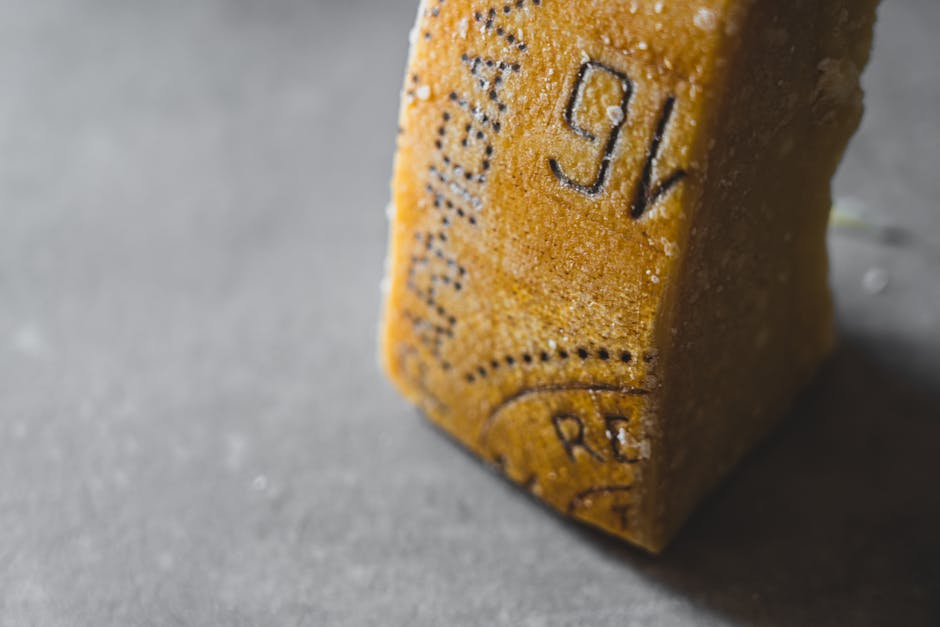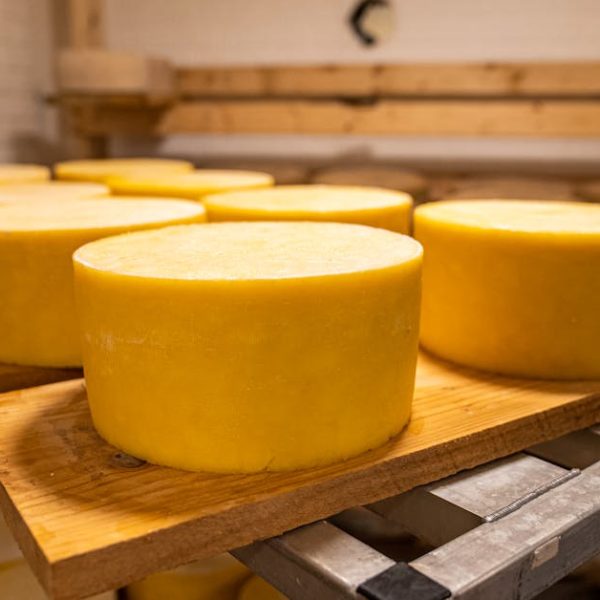Cheese—everyone’s favorite dairy product. Unique, versatile, and adored by millions worldwide, it effortlessly graces all types of cuisine, both humble homely treats and gourmet grandeur. But cheese demands some TLC— Tender Loving Care. It’s a temperamental delight that if not stored correctly, can prematurely mature and lose its delectable charm. If you’ve ever wondered how to properly store your cheese in order to preserve its true essence, then you’re in the right place.
Understanding Cheese and Its Storage Needs
Cheese is a delicate, living organism. Composed of protein, fat, and water cohabiting in a complex and unstable balance, it undergoes a continual slow fermentation process. This unique composition makes cheese responsive to its environment.
If it’s too hot or dry, the cheese hardens and oils start to seep out. When it’s too damp or cold, the cheese either doesn’t age or grows mould prematurely. So, knowing how to control the cheese’s environment is paramount to retain its quality. After all, the perfect bite of cheese is all about that blissful balance of texture and flavor – something that proper storage can ensure.
Pro Tip : Remember, one size does not fit all. Different kinds of cheese have different storage requirements. For instance, a robust cheddar has different needs than a delicate brie. So, it’s essential to make storage choices based on the cheese variety.
The Right Temperature: Managing Cheese Lifespan
Temperature is a key player in cheese storage, effectively deciding the lifespan of your cheese. The golden rule is that cheese should be kept cold but not freezing. Ideally, cheese thrives at temperatures around 4-8 degrees Celsius (40-50F), equivalent to the temperature of a wine fridge or a cool cellar.
However, tropical cheeses like Paneer and Queso Blanco or fresh cheeses like Mozzarella and Ricotta fare well under refrigeration, while aged cheeses like Cheddar or Gruyère prefer room temperature.
Quick Temperature Guide to Various Cheeses:
- Refrigeration (1-4 Degrees Celsius): Paneer, Queso Blanco, Mozzarella, Ricotta
- Room Temperature (20-22 Degrees Celsius): Cheddar, Gouda, Gruyère
Comparatively, refrigeration aids in preserving cheese but can sometimes compromise the cheese’s taste and texture. On the other hand, room temperature enthusiastically allows the cheese to ‘breathe’, greatly enhancing its flavor.
Choosing the Right Packaging: Breathability and Humidity
Cheese is like a breathing organism that requires an adequate amount of moisture to prevent it from drying out. However, too much humidity can encourage unwanted microbial growth. This makes choosing the right packaging for your cheese a crucial task.
For instance, cheese paper is specifically designed to maintain the perfect balance of humidity. Wax paper, though a close second, sometimes fails to retain ample moisture. Plastic wrap, while being the most accessible, often chokes the cheese, leading to ammonia-like taste.
Checklist for Cheese Packaging:
- Breathability
- Moisture Retention
- No residual taste or smell
In the sophistication of cheese storage, every detail matters. Mastering these simple yet crucial factors ensures that you experience the cheese just as the cheesemaker intended. Wouldn’t that be something to savor?
Cheese Accessories for Proper Storage
The passionate cheese enthusiast may often find themselves gravitating towards specialized cheese storage accessories – like cheese bells, cheese grottos or cheese vaults. These accessories are designed to provide an ideal environment for your delicate cheese, both in terms of temperature and humidity.
In a cheese bell or a cheese vault, the cheese breathes, matures and ages gracefully without losing moisture. A cheese grotto, on the other hand, mimics the environment of a cheese cave, providing your cheese with the utmost pampering it deserves.
Pro Tip : Investing in cheese accessories does seem a bit on the expensive side, however, if you regularly buy high-quality cheese and are after maintaining its pristine condition, these investments may be well worth it.
Vis-à-vis DIY cheese storage solutions, while cheaper and accessible, they may not provide the same level of control and care that dedicated cheese accessories can offer.
Freezing Cheese: When and How It’s Done
Freezing is a contentious topic when it comes to cheese storage. Some suggest it as a last resort, while others deem it as a versatile, convenient option. Truthfully, whether or not to freeze your cheese depends on the type of cheese in question and your personal preference.
Hard and semi-hard cheeses like Cheddar, Gouda, and Swiss can handle the chilly clime of a freezer. However, freezing soft cheeses like Brie or Camembert compromises their texture and moistness, often resulting in a crumbly, dry cheese.
Freezing Guide for Various Cheeses:
- Can Be Frozen: Cheddar, Gouda, Swiss
- Should Not Be Frozen: Brie, Camembert, Blue Cheese
When freezing cheese, it is crucial to wrap it tightly in plastic wrap or aluminum foil to prevent freezer burn, and then place it in a sealed freezer bag. Always defrost cheese slowly in the refrigerator for a day or two before using it, to preserve texture and flavor.
Remember, the real essence of any cheese lies in its freshness and proper storage is the key to maintain that freshness. Adorn your dining table with the golden goodness of cheese now, and savor it for days to come with this handy, easy cheese storage guide. Whether you’re a seasoned cheese connoisseur or a novice cheese lover, these practical, actionable cheese storage tips and insights can truly elevate your cheese experience. Enjoy the blissful bite of perfectly stored cheese! Enjoy the blissful bite of perfectly stored cheese!
Key Takeaway:
- Cheese, a living, delicate organism, reacts strongly to its environment which influences its fermentation process. Proper storage and understanding of individual cheese variety needs are integral for preserving quality and flavor.
- Temperature plays a significant role in managing cheese lifespan. Different cheeses require different storage temperatures, some thrive in refrigeration, while others prefer room temperature.
- Breathability and humidity are vital factors in cheese packaging. The packaging must strike a balance between preventing the cheese from drying out and avoiding excessive humidity that can lead to unwanted microbial growth.
- Cheese accessories like cheese bells, cheese grottos, or cheese vaults are designed to optimize cheese storage. Although these tools represent an investment, they might be worth considering for those frequently buying high-quality cheese.
- Freezing cheese is a contentious topic. While suitable for hard and semi-hard cheeses, freezing can harm the texture and moistness of soft cheeses.
In the end, remember that every detail counts in cheese storage. Whether you’re an aficionado or just taking your first steps into the world of cheese, the knowledge of proper storage can significantly enhance your cheese experiences. So, let’s embrace this exciting journey, understanding that each bite of well-preserved cheese is a celebration of artisan craftsmanship and rich taste profiles.
FAQs
Q: Can I store different types of cheese together?
A: It generally isn’t recommended as different varieties have unique storage needs. Moreover, stronger flavored cheeses could impact the flavor profile of milder types.
Q: How should I store cheese if I don’t have a cheese-specific accessory?
A: A basic approach is to wrap your cheese in cheese paper, wax paper, or a breathable plastic. Then place it in a sealed container in the coolest part of your refrigerator.
Q: Should I repurpose the original packaging for storing cheese at home?
A: Generally, it is better to rewrap your cheese once opened. The original packaging might not provide an optimal environment after breaking the cheese’s seal.
Q: Is it safe to eat the rind of the cheese?
A: Depending on the cheese type, the rind could be edible and provide an intriguing flavor dimension. However, be cautious with mold-ripened or wax-coated cheeses.
Q: Can I salvage overripe or moldy cheese?
A: If mold forms on hard or semi-hard cheese, you can safely cut off the moldy part and continue to consume the rest. However, discard soft or shredded cheeses that show signs of spoilage.
Feel free to share this article and delve further into more engaging topics on our website. Let’s continue to celebrate and explore the world through flavors.






